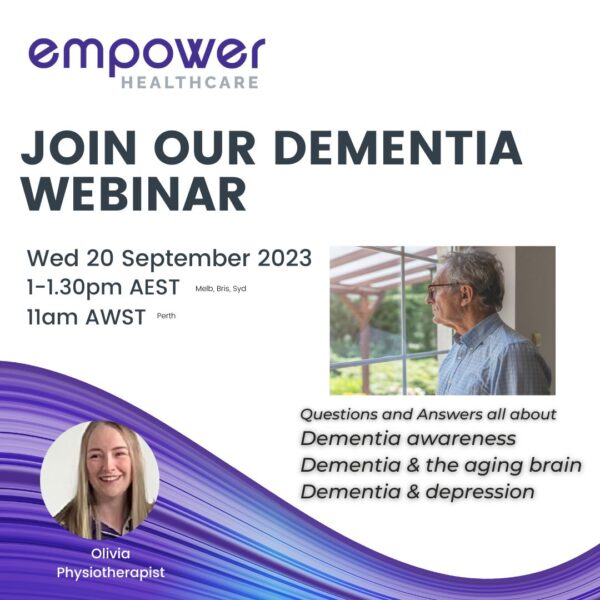With it being April Falls Month, it is timely that we understand the importance of falls prevention by exploring the physical, economical and labour costs associated with falls in aged care.
Falls are a major cause of harm to older people and fall-related injuries impose a substantial burden on the health and aged care systems. Additionally, falls resulting in injury or hospitalisation can lead to a reduction in both length
and quality of life. Research has shown that many falls can be prevented. Aged Care facilities need to evaluate the cost of pro-active ‘prevention’ or care intervention strategies designed to prevent falls among residents in comparison to the significant out-lay and burden of costs associated post falls.
The Landscape of Falls in Aged Care
Falls are a significant cause of harm to older people, so significant that the rate, intensity and cost of falls identify them as a national safety and quality issue in Australia. Every year, approximately 30% of Australians older than 65 years, 1 in 2 residential aged care residents, 70-80 % of people with dementia fall (Nitz&Choy, Climacteric 2008).
In older people, up to 30% of falls can result in moderate to severe injuries and falls are the leading cause of injury related hospitalisation in Australia (About 125,000 cases of hospitalised fall-related injury occurred in Australia in 2016–17). Nearly 50% of those hospitalised after a fall die within one year. In fact, fall related injuries account for 1 in 3 hospitalised injury cases and 1 in 5 of all fatal injuries, they are the most common cause of injury related death in people aged 65 and older.
“These figures show that falls cause more injury related deaths in Australia than transport crash fatalities.”
The cost to the health system due to fall-related injuries is major and is estimated to be 4 billion dollars per year nationally. AIHW’s 2015–16 Disease expenditure study
Besides economical costs to the health system, at an individual level falls lead to:
- Loss of confidence and fear of falling
- Reduced activities and participation
- Loss of independence
- Increased care needs
The hip and thigh are the most common injured areas in both men and women sustaining a fall and head injuries are also common. Hip fractures are one of the most common reasons for hospital admissions, with the majority (91%) caused by falls. Hip fractures have a high rate of death and morbidity, they require emergency surgery and 50 % of patients with hip fracture will not fully recover and will not return home.
The First Stage in Falls Prevention
Screening should occur as soon as possible, even before a resident steps foot into the facility. The admissions and intake team should be armed with a series of questions that flag someone’s risk factors and status to ensure strategies and interventions are in place as soon as, if not before, the resident arrives.
The Second Stage in Falls Prevention
Review and Implement is about ensuring that both the resident and fall are comprehensively assessed. Once completed interventions should be implemented or amended to prevent falls of the same nature occurring again in future.
The Third Stage in Falls Prevention
Analyse & Implement is when you review monthly, each fall or near-miss incident report. A Falls committee generally comprised of the Facility Manager, Clinical Care Coordinator, Allied Health Professional (Physiotherapist or Occupational Therapist) and Falls Champion (designated member of the care team) meet to review the reports and discuss any other relevant information from a multidisciplinary perspective and collate valuable data such as: fall by – cause, location, mobility status, time, injury, stay type and room location to form the foundation of the macro and trend analysis.
How Can Your Empower Team Help Your Facility With Falls Prevention?
Empower’s Aged Care team have developed a proven falls prevention success model for Aged Care
“We implemented our 3 step process with a client & it resulted in a 34% ROI in the form of reduction in number of falls from the previous quarter.”
At Empower, we assess every resident comprehensively and recommend falls prevention strategies proactively without waiting for a fall to occur. Our allied health professionals form an essential part of the facility’s clinical team in managing falls. We also assist facility staff in identifying any injuries without having to arrange for further medical investigation procedures by conducting post fall reviews.
Here is a list of falls prevention services available to your organisation:
- Transfers/mobility/gait/coordination/balance/endurance assessment, strategies to improve and recommendations for staff and resident safety, aids e.g. gait aids
- Proprioception and spatial awareness assessment and strategies to improve
- Muscle strength and range of movement/flexibility testing, strategies to improve/aids, exercise programs
- Reaction time to external perturbations and strategies to improve and also arrangement/assistance recommendations for safety
- Environment assessment, strategies to maximise independence and prevent falls and related injuries
- Assistive devices in falls prevention – Sensor alarms etc.
- Protective equipment/garments
- Behaviour issues and management strategies
Want to Reduce Falls in Your Aged Care Facility?
Download our 3 Step Guide To Successfully Reduce Falls In Your Facility Now!




